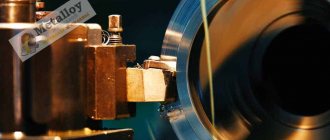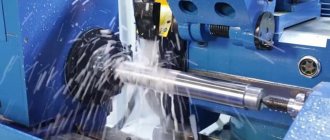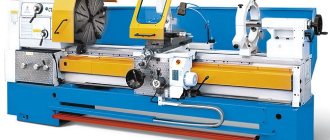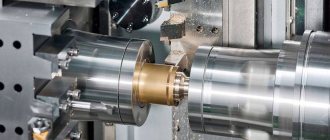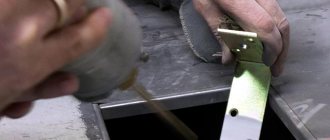Using metal milling machines is an important step towards improving and optimizing your production. CNC equipment has a huge production capacity and a list of tasks that it can easily handle.
Automation of production and the transition from manual labor to machine labor significantly speeds up the production cycle and helps increase productivity.
A metal milling machine can perform many tasks, such as:
cutting metal sheets;
- cutting parts of any shape and complexity;
- cutting grooves, edges, grooves;
- engraving;
- cutting, countersinking of holes;
- surface treatment, grinding.
One multifunctional CNC milling machine can replace an entire fleet of equipment, reducing the number of tasks for which you need to turn to third-party contractors.
Areas of application for metal milling cutters
CNC metal processing machines are very common in all areas of industry and production as they are economical and efficient. The machines are available in different sizes, they can be installed in rooms of any size: from very small home industries to huge workshops. They are unpretentious in maintenance and repair, but, however, even with minimal care they rarely break down.
The control system is a “universal soldier” that can work for days, without interruption, to produce any batch of identical parts that correspond to the layout.
They are used in the following areas:
- Metalworking;
- Construction;
- Instrumentation;
- Automotive industry;
- Small circulation production of products, etc.
Manufacturers of CNC systems and machine tool builders
Fig.2. Mind map of the use of CNC systems by machine tool builders
Established trends in the interaction of manufacturers in the global and domestic markets are clearly visible on the mind map (Fig. 2), which displays the use of various CNC systems by machine tool builders who presented their products at the exhibition. The exhibition demonstrated that Russian machine tool builders are primarily focused on using Siemens, FANUC and Balt-System CNC systems, while foreign machine tool builders have decided to use FANUC, Siemens, Heidenhain, Bosch Rexroth.
Features of the operation of a metalworking CNC milling machine
The main feature of CNC equipment is that it is automated; cutting is carried out according to a special specified program. A drawing for such a machine is a vector layout, a “map” of the movements of the cutting tool. This drawing is far from the paper format we are used to. This is a set of command codes that the machine recognizes. All the CNC operator needs to do is enter the coordinates from which the count will be made and set the equipment to the zero point. It will be necessary to specify processing parameters; they depend on the task at hand and what material is being processed.
The choice of cutter also depends on the material.
Milling cutters suitable for durable alloys such as steel are not suitable for copper, aluminum, or other ductile materials.
Conventionally, the entire processing process can be divided into two stages:
rough and finishing. Each stage has its own program; they require different tools and processing modes.
All settings are set once, and then the machine operates according to the algorithm specified by the operator. His intervention is no longer required, only monitoring the correct operation.
The cutter will move along the trajectory specified by the program. During pre-processing, the cutting tool sets the shape by removing chips layer by layer. Finishing is necessary so that the part has a neat appearance and matches the layout.
To get a good result, you need:
- Create a program without errors;
- Correctly indicate the coordinates;
- Set the zero point of the machine;
- Place the workpiece correctly on the workbench.
The last point is also not easy. Different types of metal - different work tables.
For working with flat parts or thin sheets, a vacuum table is most suitable. For volumetric parts this will not be enough; additional fastenings will be required.
When working with soft metals, you need to use substrates to avoid scratching the surface with the fastener.
CNC master what is this position?
A CNC machine foreman or operator is a person who works on this equipment and provides its maintenance. In addition to him, a CNC adjuster is needed who enters and corrects the NC. These specialties can be combined - master adjuster.
Operators have the following job responsibilities: machine maintenance, process control, checking and testing finished products, eliminating minor problems, adjusting components, preparing working tools. It operates on the basis of a job description, which is approved by the enterprise itself. The master can service several machines at the same time. The CNC operator carries out the following work: development of the NC, inputting it into the machine and testing, setting up equipment for specific processes.
Training of operators and adjusters is provided in colleges (technical schools) or in special courses in the specialty “Mechanical Engineering Technology”. In order to become a professional, a worker must acquire the following knowledge: the structure and features of CNC machines, processing technology, the basics of CNC programming, principles of working with computerized systems, signs of malfunctions of CNC equipment, features of various tools and materials. When working, the operator must strictly observe safety precautions.
CNC machines are increasingly being introduced into production. They are capable of providing high precision machining of parts at high speeds. At the same time, the economic feasibility of their use should be taken into account. There are many high-quality models offered on the Russian market, and you need to choose the best option for specific conditions.
- August 30, 2020
- 12129
Selecting the type of milling machine
Each direction of metalworking has its own, most suitable type of equipment. Each has a set of features, strengths and weaknesses. There are no machines that are better or worse than others, there are simply incorrectly selected ones.
Depending on the type of machine, you can:
- cut sheets of material;
- process ends or cuts;
- choose according to the drawing diagram;
- cut spiral threads;
- make cuts according to the drawing.
CNC designers have developed many different modifications of equipment, but the easiest way to divide them is by the way they process the surface. The cutting tool can be placed on them:
- vertical;
- horizontally.
There are also universal machines. All equipment is highly efficient. The main thing is to use its capabilities correctly.
Purpose
The technological capabilities of the devices make it possible to determine which model is best to use to perform a particular task. This factor allows us to divide the machines into six groups:
- turning;
- drilling and boring;
- milling;
- grinding;
- electrophysical;
- multi-purpose.
Lathes are designed for processing external and internal surfaces. With their help, you can also cut threads, both from the outside of the workpiece and in its inside.
Milling machines process flat and spatial body parts. In addition to standard milling, they can be used to: drill, bore, and cut threads. Drilling and boring units have similar capabilities, but their main task is focused on processing holes. Multipurpose devices allow you to perform almost the entire range of processing operations, but are expensive.
The electrophysical group includes three types of machines:
- electroerosive;
- electrochemical;
- laser
These types of machines allow complex processing. They are used when it is almost impossible to process the workpiece in any other way. The main working tool of the devices is a wire electrode. For its manufacture the following materials are used: brass, copper, molybdenum, tungsten. The presence of anti-corrosion additives ensures higher quality production of products.
Tools on machines require periodic change and adjustment. In this regard, another type of classification is distinguished - according to the method of changing the processing mechanism. According to this type of classification, there are three ways of changing:
- manual change and manual fastening;
- manual change and mechanical fastening;
- automatic change.
Devices with automatic tool changing do not require operator intervention during operation. They belong to the class of modern expensive devices and are compatible with various CNC systems.
Advantages of machines designed to work with metal
- The design of the machine is rigid, it is durable and can withstand heavy loads. The cutting quality is not reduced.
- One machine - many tasks. It can be reconfigured for another task while maintaining the settings. In the future, you won’t have to set everything again manually. The machine can do everything. Well, or almost everything. Not only cut or cut sheets, but also create three-dimensional parts and apply engraving.
- High speed. The machine does not need to go to lunch, it cannot get tired or get sick. Therefore, it produces large volumes quickly and efficiently.
- All CNC equipment can be upgraded to make work easier. For example, install a chip catcher, additional cooling, etc.
- The milling machine is durable. If you take care of it, it will last for ten years.
Specifics of CNC systems from domestic manufacturers
The products of Russian manufacturers of CNC systems lag noticeably behind the world level, although the desire to catch up is clearly expressed, and here the issue of the correct choice of architectural concept is important. Balt-System is considered an informal leader , but in the regions it is inferior to its competitors Modmash-Soft , Mikros and IzhPREST , since such high-tech products as CNC systems require timely technical support, which presupposes the presence of a well-branched network countrywide.
CNC CNC-310 Balt-System
In recent years, several new domestic CNC systems and new modifications of existing systems have appeared that should be noted. The NC-310 CNC system has a distributed architecture, which allows analog and digital inputs/outputs to be distributed over the high-speed Serial Speed Bus in accordance with the specifics of the control object. Modmash-Soft LLC expanded the model range of FMS-3000 CNC systems and presented CNC system software based on the 32-bit Windows CE operating system. The FlexNC systems (Stankocenter) and IntNC (STC INELSI) have a similar operator interface and are built on the basis of a motion control and a personal computer. For multi-axis configuration, a DeltaTau motion controller is used; when it comes to controlling up to 4 axes, the CNC system can be equipped with a motion controller based on an ARM processor [14].
CNC "Servokon"
It should be noted that the ServoCon () CNC system is built on the principle of a CNC printer. The originality of the idea lies in the organization of the operator’s work: the control program is sent to the machine in the same way as a document is sent to print. The system is positioned as a cheap, reliable solution with a 4-line indicator as a display. Of interest is the complete set of spline interpolation (cubic, Akima and NURBS splines), implemented by the WinPCNC CNC system [15], (MSTU Stankin), demonstrated at the training stand. But the lack of multi-channel capabilities limits its application.
Feedback subsystem
The main elements of the feedback subsystem are sensors that function as a measuring system. They control the position and speed of the knife. The control unit receives signals and creates new ones, based on calculating the difference between the current and specified parameters.
Help : The main task of the feedback system is to provide the US with information about the current position of the actuator of the device and the speed at which the motors operate.
What is NC CNC?
CNC or Computer numerical control is one of the areas in the development of devices for various purposes, which is based on the use of electronic devices in the control system. In Russia it is known as computer numerical control (CNC).
CNC is a computerized complex that controls the working elements of the device and controls the execution of tasks. Any movements of such elements are specified by the control program for this machine. It is formed from commands that are written in the device’s programming language.
The computer stores the control program and the operator can always use it to perform a specific function.
Help : The CNC system expands the capabilities of the previously used NC system. Its basis is microcontrollers, logic controllers, and computers based on microprocessors.
Methods for creating and structure of control programs
Modern equipment allows you to create programs for operating CNC machines in several ways:
● Writing a program manually or in a PC text editor. A necessary stage in training specialists to work on CNC machines. It is also suitable as the main method of programming in factories where several simple parts are produced over a long period of time without resorting to restructuring the equipment.
● Drawing up and entering a program on the CNC rack. The control panel of most modern control systems contains a keyboard and display, which allows you to program and view a virtual simulation of the machining process directly at the workplace. Many systems allow you to enter programs in the “background” while the machine is busy processing a given part.
● Using the capabilities of CAD-CAM systems for computerized production preparation. Special software allows you to create a three-dimensional model of a part, calculate and prepare a program for its production. And also virtually “manufacture” the required part, using real data on the kinematics of a specific CNC machine. This method allows you to create control programs quickly and accurately, practically eliminating programming errors and associated damage to workpieces. The effectiveness of this method is especially high when creating CP for the manufacture of particularly complex parts.
Structurally, a G-code program consists of blocks. This is the name given to groups of commands that are intended to perform some completed action. Personnel can also consist of one team. The end of each “frame” is indicated by the line feed (LS/LF) character. Each program begins with an empty “frame”, which consists of the “%” sign, and ends with codes M02 or M30, respectively indicating the end of the CNC program or the end of the information block in memory.
The specified structure and language for preparing programs for CNC equipment are enshrined in international standards RS2740, ISO-6983-1.82, as well as GOST USSR 20999-83. Domestic specialists often use the designation “ISO-7 bit”, which has been assigned to G-code programs since the times of the USSR. Programmers of companies that develop and produce CNC machines are required to adhere to the requirements of world standards when preparing software.
In some cases, when developers provide their systems with additional capabilities and some special functions, there may be certain deviations of the software from the standard for creating programs in G and M codes. In such cases, you should carefully study the documentation that should be provided by the equipment manufacturer.
Important equipment parts
Usually the bed is made cast. The design is very rigid and has damping potential. If the shape of the frame has a complex structure, they resort to welding.
Any machine tool must have sliding guides. Due to the force of friction, the speed of movement of the working mechanisms becomes minimal. Linear guides provide high precision movement.
For processing, the workpiece is fixed in a machine spindle, which has several types:
- Rotor with electric motor.
- Rotation is carried out using a belt drive.
The rotor spindle rotates at a speed of 100 thousand rpm. min. This mechanism is installed on machines that process complex stamps, as well as various molds.
Belt drive does not develop such high speed. Usually about 15 thousand revolutions. It is designed to work with simpler parts.
A little history
However, the modern stage in the history of CNC machines began only a century and a half after the invention of Jacquard, in the United States of America. After the end of World War II, in the late 40s, John Parsons, the son of the owner of Parsons Incorporated, tried to control the machine using a special program that was entered from punched cards. Parsons did not achieve any positive results, so he turned to specialists at the Massachusetts Institute of Technology for help.
The employees of the institute's laboratory of servomechanics did not improve the design presented to their attention, and they quickly forgot about Parsons. But about his ideas - no. Having created their own design, they initiated the institute’s purchase of a company that produced milling machines. After which the leadership of the Massachusetts Institute of Technology entered into a contract with the US Air Force. The contract dealt with the creation of a new type of high-performance machines for processing propellers by milling.
The operation of the milling machine, which was assembled by the laboratory staff in 1952, was controlled according to a program read from a punched tape. This design turned out to be too complex, and the desired result was not achieved. However, the story became public, information about the new development was published and aroused great interest from competitors. Several well-known companies simultaneously began their developments in this direction.
The greatest success was achieved by the designers of Bendix Corporation. The NC device released by Bendix has been in production since 1955 and has already been actually used to control the operation of milling machines. The new product took root with difficulty, but thanks to the interest and financial assistance of the military department, over two years more than 120 CNC machines were produced, which significantly increased labor productivity and the accuracy of machine work.
Even then, the undeniable advantages of the NC numerical control system for machine tools were noted: a significant increase in labor productivity and significantly higher precision of surface processing. But truly revolutionary changes in the field of CNC machines took place when specially designed microprocessors and microcontrollers were used as a “smart” module that controls the operation of the machines. The technical term “CNC”, which began to designate these systems abroad, is an abbreviation of the English words ComputerNumericalControl.
Capabilities of universal CNC machines in metal processing
Most often, a cantilever type milling machine is used in metalworking. The spindle in such a device can hardly move and, accordingly, makes very few movements. The movement is provided by the work table with the part attached to it.
The overwhelming number of such machines are universal. They are designed for milling workpieces made of steel, cast iron and non-ferrous metals.
The following operations can be performed on the milling machine:
- milling surfaces with any slope;
- milling of ledges, grooves and grooves;
- milling of shaped and combined type surfaces;
- material cutting;
- thread milling works;
- drilling;
- boring;
- carving;
- processing of surfaces with complex profiles.
The following operations can be performed on a lathe:
- facing and turning of material;
- cutting off workpieces, creating internal, end or external grooves;
- drilling;
- grinding;
- processing of metals and alloys.
Mechanics
Modern materials can reduce the effect of vibration on the bed. Wear-resistant kinematic systems ensure a specified trouble-free operation. Temperature sensors transmit information about the condition of the support bearings, hydraulic system, lubrication and cooling tanks. If there is insufficient oil flow into the main loaded unit - the spindle - a fault message is displayed. This allows you to preserve the integrity of the expensive element.
Before starting work, the automatic system heats up the lubricating oil. Pulse dosing of the substance onto the guides is carried out using timers. Drive systems constantly monitor the load on kinematic units during movement. Once the cut-off current is exceeded, a stop alarm is issued via the controller. After the fault has been eliminated, the error is acknowledged by the service technician.

